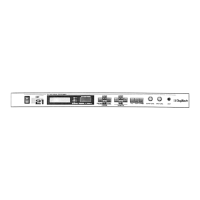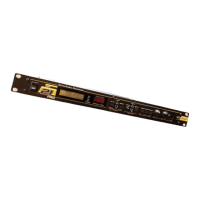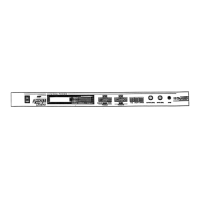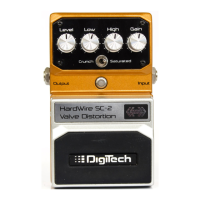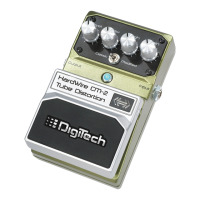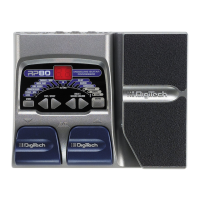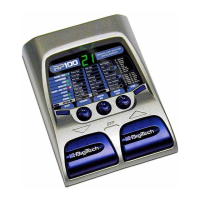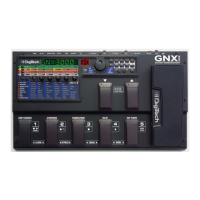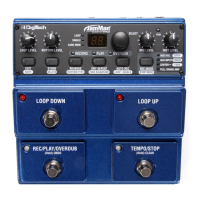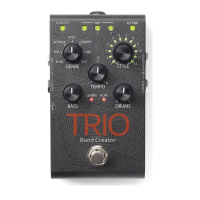35
produce radical new textures when used creatively.Try setting it slightly faster or slower
than SPEED. Ranges from 0.06 to 2.0 Hz.
Wander Depth Adjusts the intensity of the oscillation deviations produced by WANDER SPEED.WANDER
DEPTH produces dramatic psycho-acoustic swirling effects when set higher than DEPTH2.
Ranges from 0 to 10 milliseconds.
WvFrm Selects which waveform the LFO follows. Options are: sine, triangle, SP1 (special 1), and SP2
(special 2). See figure 3-4
Dly A - B Controls the delay time of chorus voices A and B. Higher delay time settings produce a
more dramatic sweeping sound. Ranges from 0 to 60 milliseconds.
Dly C - D Controls the delay time of chorus voices C and D. Higher delay time settings produce a
more dramatic sweeping sound. Ranges from 0 to 60 milliseconds
Dly E - H Controls the delay time of chorus voices E through H. Higher delay time settings produce a
more dramatic sweeping sound. Ranges from 0 to 60 milliseconds
Out A - B Adjusts the overall level of chorus voice A or B. Ranges from Off to 100%.
Pan A - B Controls the placement of chorus voice A or B. Ranges from -99 to 99.
Out C - D Adjusts the overall level of chorus voice C or D. Ranges from Off to 100%.
Pan C - D Controls the placement of chorus voice C or D in the stereo image. Ranges from -99 to
99.
Out LA - LB Adjusts the left-side level of chorus voice A or B. Ranges from Off to 100%.
Out RA - RB Adjusts the right-side level of chorus voice A or B. Ranges from Off to 100%.
Spread Controls the width of the effect’s stereo imaging.The higher the setting, the wider the
image.The lower the setting, the more monophonic the effect becomes. Ranges from 1 to
10.
FLANGER
A flanger is just a chorus that loops back into itself, causing what can be described as a tubular sound (since it sounds
much like the reflections heard inside a large cement or metal pipe). It is still a modulating effect, so you hear a lot of
sweeping movement.This makes the flanger a very colorful effect that can be easily overused if you're not careful.The
more you feed the flanger back to itself, the more intense the sound becomes.
WHEN DO I USE FLANGE? An electric guitar is the first sound that begs for the flanger effect. It works very
well with both clean and distorted guitar sounds. By setting the Speed and Depth parameters to higher settings,
this will add more depth and body to the overall guitar signal.
FLANGER PARAMETERS
FX: Lvl Controls the signal input level fed to the Module. Ranges from Off to 100%.
Dry: Lvl Controls the level of the dry (uneffected) signal. Ranges from Off to 100%.
Balance Controls the positioning of the dry signal in the stereo soundfield. Ranges from -99 (all left)
to 99 (all right).
Speed Controls the Low Frequency Oscillator (LFO) speed of the flanger. Ranges from 0.06 to
16.0 Hz.
Depth Controls the intensity of the flange effect. High settings of DEPTH combined with high set-
tings of FDBCK produce dramatic, synth-like textures. Ranges from 0 to 30 milliseconds.
FdBck Controls how much of the flanged signal is fed back to the input of the Module.The
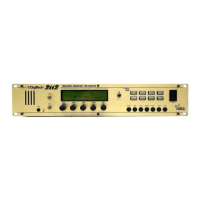
